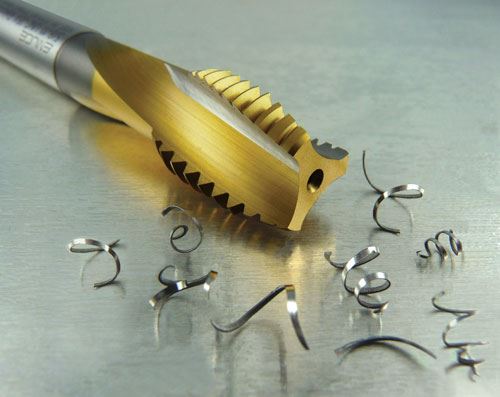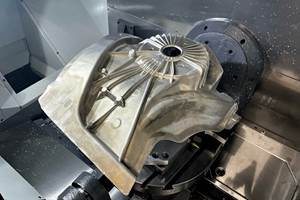Tapping Oil Field Parts
Emuge’s Rekord DZBF taps promote the uninterrupted flow of chips out of the cutting zone to protect oil field components during hole-threading operations.
Share





Thread connections are common—and critical—on many oil field parts such as blow-out preventers, valves, pumps, pump jacks, compressors and gears. Tapping operations on openings in these components can be complicated by problematical chip evacuation. To address these difficulties, Mark Hatch, product director—taps and thread mills at Emuge Corp. (West Boylston, Massachusetts) offers these observations and product recommendations.
Emuge CBTz, the company’s latest development in chip-breaking technology. It is designed to promote the uninterrupted flow of chips out of the cutting zone. This eliminates the potential
for tap failure due to chip packing in the flutes or chips birdnesting around the shank, Mr. Hatch says.
Related Content
Fixturing Castings Made Simple Through Adhesive Workholding
When a casting proved too malleable for traditional gripping, Thomas/Euclid Industries adopted — and succeeded with — Blue Photon adhesive workholding.
Read MoreCustom Workholding Principles to Live By
Workholding solutions can take on infinite forms and all would be correct to some degree. Follow these tips to help optimize custom workholding solutions.
Read MoreForm Tapping Improves Tool Life, Costs
Moving from cut tapping to form tapping for a notable application cut tooling costs at Siemens Energy and increased tool life a hundredfold.
Read MoreHow to Accelerate Robotic Deburring & Automated Material Removal
Pairing automation with air-driven motors that push cutting tool speeds up to 65,000 RPM with no duty cycle can dramatically improve throughput and improve finishing.
Read MoreRead Next
Setting Up the Building Blocks for a Digital Factory
Woodward Inc. spent over a year developing an API to connect machines to its digital factory. Caron Engineering’s MiConnect has cut most of this process while also granting the shop greater access to machine information.
Read MoreRegistration Now Open for the Precision Machining Technology Show (PMTS) 2025
The precision machining industry’s premier event returns to Cleveland, OH, April 1-3.
Read MoreBuilding Out a Foundation for Student Machinists
Autodesk and Haas have teamed up to produce an introductory course for students that covers the basics of CAD, CAM and CNC while providing them with a portfolio part.
Read More
















.png;maxWidth=300;quality=90)












